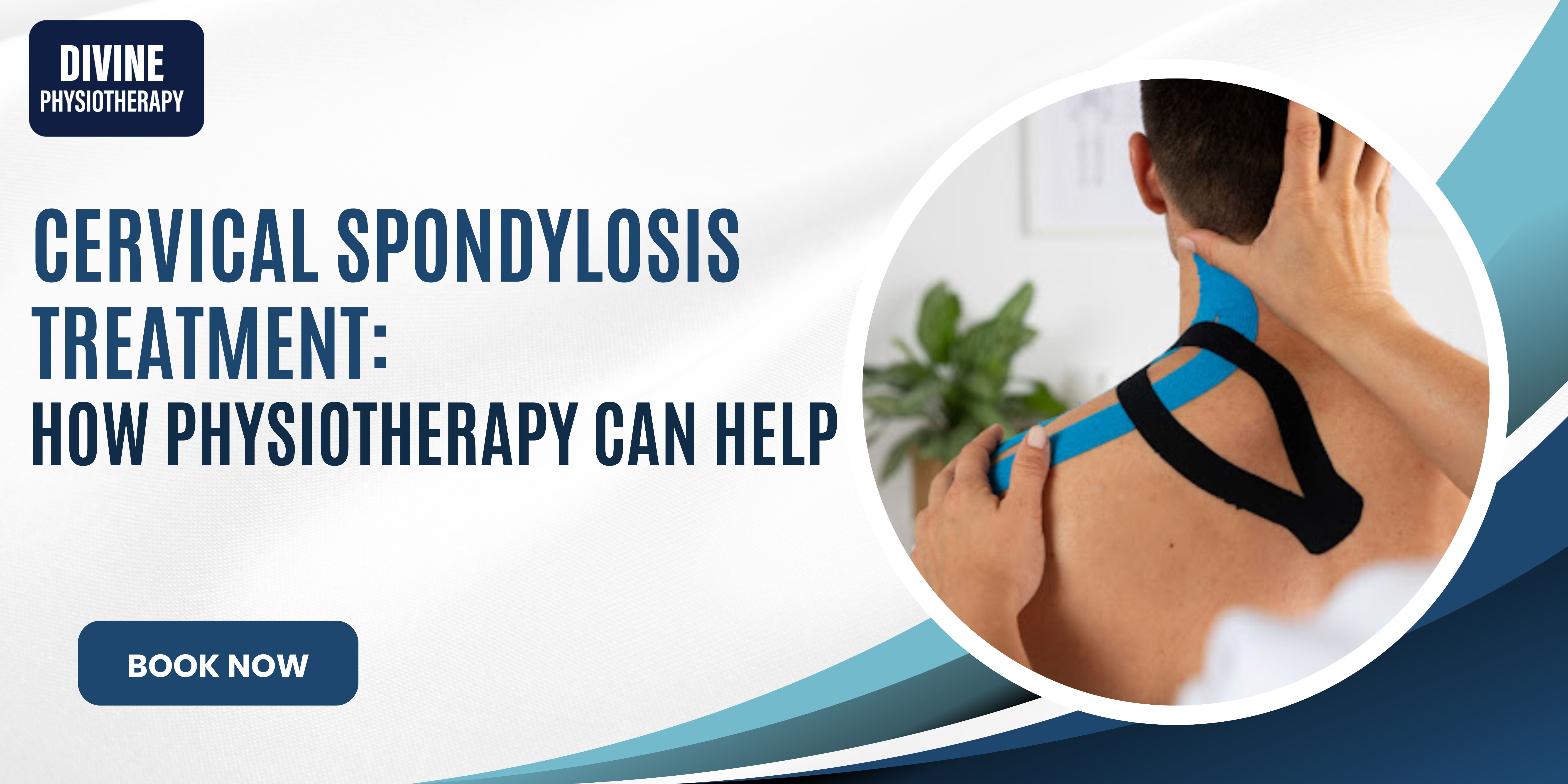Cervical spondylosis is a common age-related condition that affects the neck. It occurs due to wear and tear of the spinal discs and bones in the cervical spine. Many people experience neck pain, stiffness, and reduced mobility due to this condition. Fortunately, physiotherapy is an effective treatment option that can help relieve symptoms and improve quality of life. At Divine Physiotherapy, we specialize in treating cervical spondylosis through targeted exercises and therapies.
What is Cervical Spondylosis?
Cervical spondylosis, also known as cervical osteoarthritis, is a degenerative condition of the neck that affects the joints, discs, and bones. It is most common in people over the age of 40 but can also occur in younger individuals due to poor posture, lifestyle habits, or injuries.
Symptoms of Cervical Spondylosis
-
Neck pain and stiffness
-
Headaches, especially at the base of the skull
-
Reduced flexibility and movement in the neck
-
Tingling or numbness in the arms and hands
-
Muscle weakness in the upper limbs
-
Dizziness or balance issues in severe cases
Causes of Cervical Spondylosis
-
Aging: Natural wear and tear on the cervical spine over time.
-
Poor Posture: Slouching or prolonged use of mobile devices and computers.
-
Injury: Previous neck injuries can accelerate degeneration.
-
Genetics: A family history of cervical spondylosis can increase the risk.
-
Sedentary Lifestyle: Lack of physical activity can weaken neck muscles.
How Physiotherapy Helps in Cervical Spondylosis Treatment
Physiotherapy plays a crucial role in managing and treating cervical spondylosis. It helps reduce pain, improve mobility, and strengthen the neck muscles. Here’s how:
1. Pain Relief Techniques
-
Heat and cold therapy to reduce inflammation and muscle stiffness.
-
Ultrasound therapy to improve blood circulation and healing.
-
Electrical stimulation (TENS) to relieve nerve pain.
2. Stretching and Strengthening Exercises
-
Neck Stretching: Improves flexibility and reduces stiffness.
-
Isometric Exercises: Strengthens neck muscles without causing strain.
-
Shoulder Shrugs and Rotations: Enhances mobility and support to the cervical spine.
3. Posture Correction
-
Teaching proper sitting and standing postures to avoid strain on the neck.
-
Ergonomic adjustments for workspaces to prevent worsening symptoms.
4. Manual Therapy
-
Hands-on techniques like massage and mobilization to improve neck movement.
-
Soft tissue release to ease muscle tension and pain.
5. Lifestyle and Activity Modifications
-
Encouraging daily exercises and movement to prevent stiffness.
-
Advice on avoiding prolonged screen time and maintaining good posture.
Benefits of Physiotherapy for Cervical Spondylosis
-
Non-Surgical Treatment: A safe and effective alternative to surgery.
-
Pain Reduction: Helps in long-term pain management.
-
Improved Mobility: Increases neck flexibility and movement.
-
Better Posture: Prevents further damage and discomfort.
-
Enhanced Quality of Life: Allows individuals to perform daily activities without discomfort.
When to Seek Physiotherapy?
If you experience persistent neck pain, stiffness, or any of the symptoms mentioned above, it is important to seek professional help. At Divine Physiotherapy, we offer personalized treatment plans to help you recover and prevent further complications.
Conclusion
Cervical spondylosis is a common condition that can cause discomfort and affect daily life. However, with the right physiotherapy treatment, pain and stiffness can be effectively managed. At Divine Physiotherapy, we provide expert care to help patients regain mobility, improve posture, and live pain-free. If you are suffering from cervical spondylosis, consult our physiotherapists today for the best treatment options!
